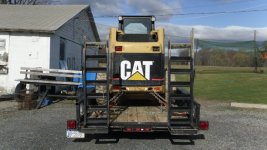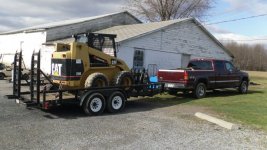Jaylegger
Platinum Member
- Joined
- Oct 4, 2009
- Messages
- 713
- Tractor
- Massey Ferguson GC2600L
#2 highway in salisbury new brunswick,20 minutes West from moncton .They said absolutely no straps
From what I can gather the guy who answered the phone is wrong. New Brunswick does follow same NSC Standard 10 as Nova Scotia and webbing straps are allowed. I did find a revision of the National tandard linked throught the New Brunswick DOT website and it states that effective Jan 1 2011 tie downs must be marked by the manufacturer with the WLL. Default rating will no longer be used for tie downs with no ratings after that date. In that revisions webbing straps are referenced. In another draft revision is does state that "The use of synthetic webbing to secure flattened or crushed vehicles is prohibited"
I've not yet seen any regulations which would indicate only chains and binders are allowed.

